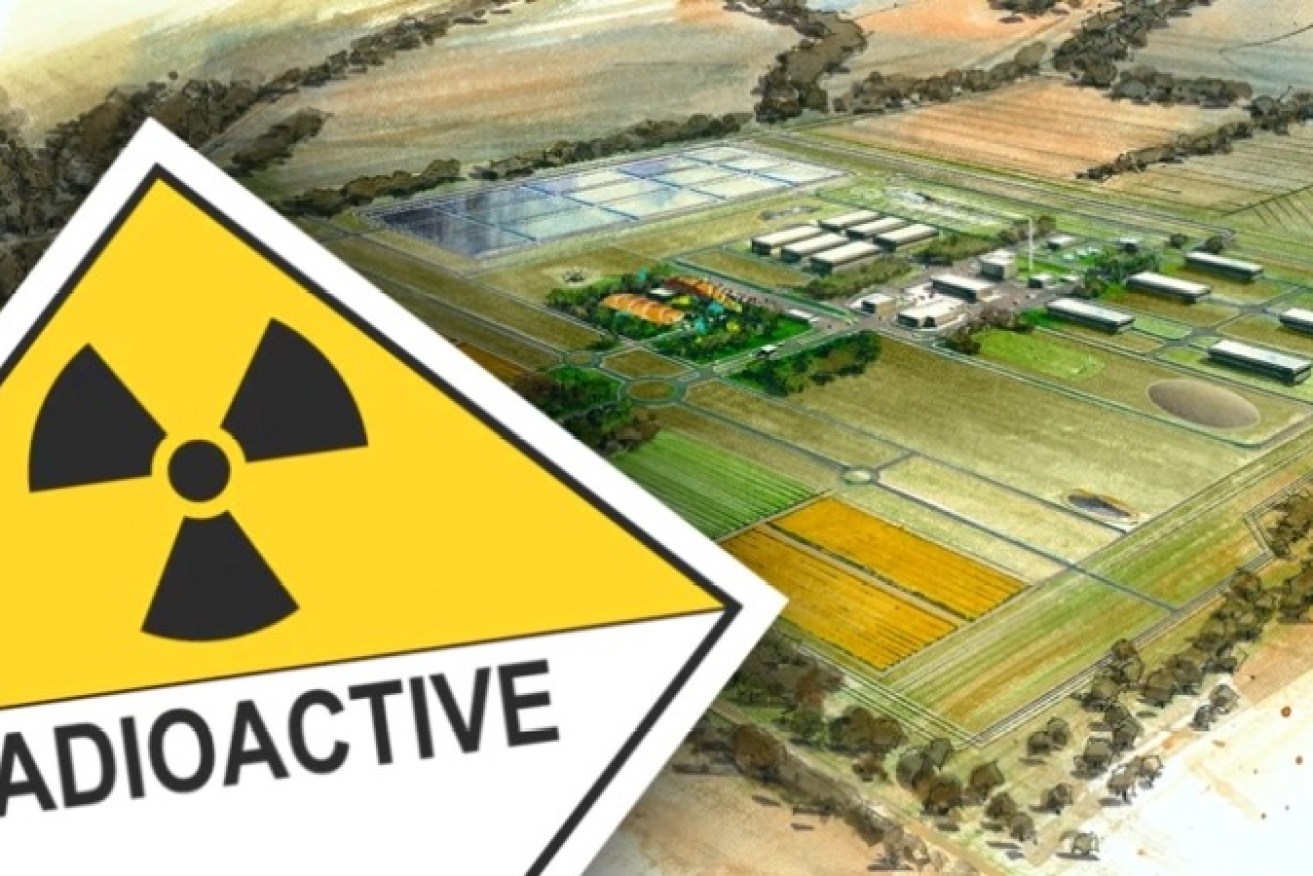Nuclear subs waste deal should sink Kimba plan
Australia’s agreement to store weapons-grade nuclear waste on Defence land as part of the AUKUS submarines deal should leave the current federal push for a waste facility on Eyre Peninsula dead in the water, argues Craig Wilkins.

Supplied artist impression of the nuclear waste facility earmarked for Napandee near Kimba. Image: Tom Aldahn/InDaily
Our nation has struggled with nuclear waste for decades.
With AUKUS, this whole messy debate has been dialled up to eleven.
As Prof Ian Lowe carefully outlined, Australia has so far failed to deal appropriately with even its historic ‘low level’ waste. This includes lesser contaminated items produced in nuclear medicine and laboratory research that needs to be kept safe from humans for 300 years.
Yet the federal government has agreed – without consultation with the Australian people – to take on the management and disposal of weapons-grade nuclear material produced from nuclear submarines that requires isolation for a hundred thousand years.
That’s a length of time far beyond any living civilisation. It’s one extraordinary leap.
And there are some like Tom Kenyon who think while we are at it, we should go much further and import this toxic waste from other countries as well.
It’s time to take a deep breath and slow down.
Nothing about nuclear waste is easy, or straightforward, or cheap.
It’s why neither of our new AUKUS partners in the UK and USA have been able to sort out their growing waste stockpile technically or politically, even after more than 50 years of trying.
Despite vast budgets deserts and remote desert locations, the USA has still yet to meet this intergenerational challenge.
Back home, the AUKUS agreement is radically changing nuke waste calculations.
Defence Minister Richard Marles has said that planning for a burial site for the highly radioactive submarine reactor waste will commence within a year.
That’s a significant shift in federal policy. And a step that was already well overdue.
Even without this additional waste burden, our nation was already faced with the need to identify a site for the permanent burial of spent fuel wastes from the Lucas Heights nuclear reactor in Sydney.
But instead of identifying a permanent disposal site, the former Morrison Government wasted years pushing a deeply flawed and highly divisive plan to ship reactor waste to store in temporary, above-ground shedding on prime agricultural land in Kimba, South Australia.
If this bizarre process were to proceed, the search for a permanent repository would only begin once the waste was in Kimba – at which point it would have to be shifted again.
According to the National Inventory of Radioactive Waste, 97% of the waste planned for the Kimba site is already securely housed at Lucas Heights.
And the Morrison Government had already budgeted an additional $60 million to increase the storage capacity of the waste there ‘for decades to come.’ Contrast this with the expected $350-400 million cost to ship the waste to SA.
So, the Albanese Government inherited a choice of two temporary storage options: one at Lucas Heights, and one at Kimba.
On every single measure: safety, security, monitoring and response, social licence and cost, keeping the waste at Lucas Heights is by far the better option. And it avoids the risks that double with shifting it twice.
That’s even before we consider the deep and consistent opposition to the Kimba dump plan by the Barngarla Traditional Owners, who were shamefully excluded from the formal consultation ballot.
Less than a week before Prime Minister Albanese went to San Diego for the AUKUS theatrics, the Barngarla were in the Federal Court building in Angas Street fighting the federal government’s proposal.
In a heavily lop-sided David and Goliath legal battle, these Elders are up against an army of government lawyers.
This attempt to impose the waste on an unwilling community is costing taxpayers around $50K a week in legal fees.
The federal government’s multi-decade attempt to find a site for its nuclear waste has followed a depressingly familiar narrative: an attempt to impose waste on Aboriginal land, which is then met with fierce and ultimately successful resistance from Traditional Owners.
First it was Coober Pedy, then Muckaty Station in the NT, and now Kimba.
In the context of Voice and Treaty, the approach needs to be far different to what has gone before us.
We must not waste another decade ignoring our international obligations and dividing local communities.
The AUKUS pact will have far-reaching and unsettling ramifications for our regional security as well as national politics and radioactive waste management, most of which are yet to play out.
But an early casualty must be the Kimba dump.
If we are to have any chance to identify and develop an appropriate and secure burial site for the reactor waste from Lucas Heights, or the weapons grade submarine waste, this story has to change.
And the reset must begin with Kimba.
Craig Wilkins is chief executive, Conservation Council of SA




